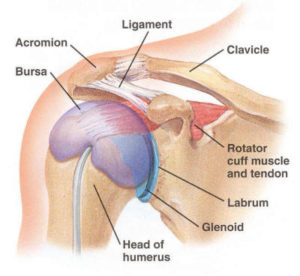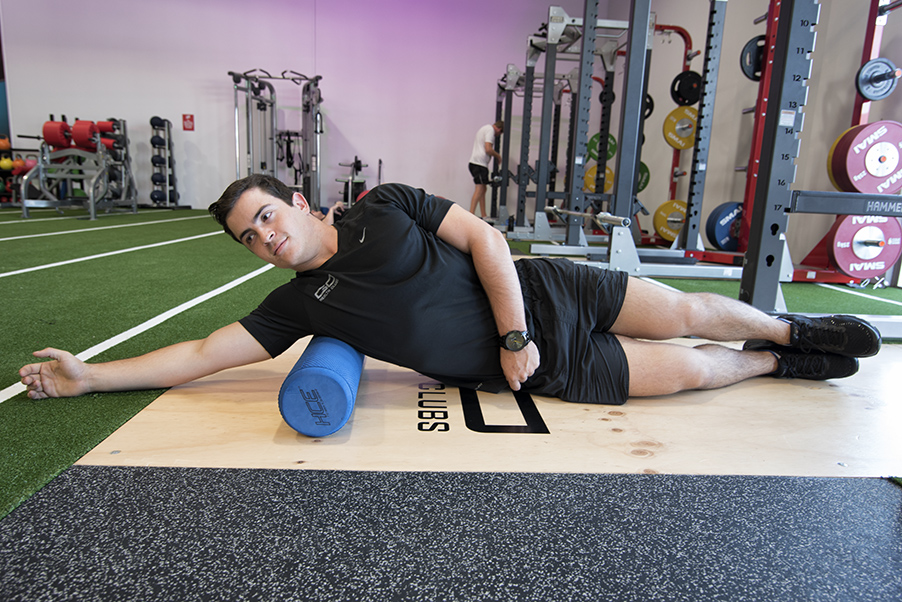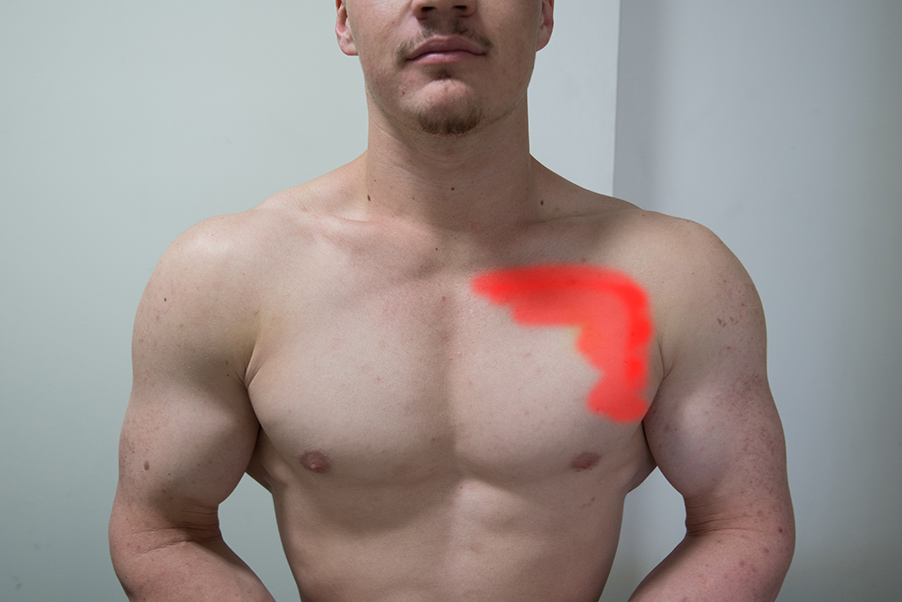Shoulder Bursitis Pain
Shoulder pain can be a giant pain in the butt! Your shoulder is the most mobile joint in the body, and most people are unaware of, or forget its importance in undertaking daily activities. Once they develop shoulder pain, they soon realise!
The most common cause of shoulder pain that I personally come across in a clinical setting is bursitis of the glenohumeral joint. This usually fits into a syndrome named shoulder impingement which occurs when there is impingement between the tendons or bursa in the shoulder during movement.
What is Bursitis?
Bursitis is inflammation of the bursa. There are approximately 160 bursae in the adult body. Bursa are fluid filled sacs located around joints. They are essential for movement to occur smoothly as they help to reduce friction.
Bursitis can occur due to a number of reasons. These reasons include excessive friction from overuse or repeated movements (particularly with bad posture/form), impact , injury and underlying conditions such as rheumatoid arthritis. When the bursa is exposed to these conditions the synovial membrane of a bursa becomes inflamed.
In overuse type injuries, bursitis is often associated with impingement and tendonitis of the rotator cuff muscles.
Symptoms of bursitis include:
- a gradual onset of pain over weeks or months
- localised dull pain
- swelling
- stiffness
- increased pain at night
- pain when sleeping on that shoulder
- pain worsened with movement
- pain may spread down your arm towards the elbow or wrist
- pain made worse when using your arm above your head
- painful arc of movement – shoulder pain felt between 60 - 90° of arm moving up and outwards
Bursitis can usually be accurately diagnosed through a physiotherapy assessment. If there is any doubt it is usually backed up by ultrasound scan and/or x-ray to rule out other possible causes.

What should I do if I have shoulder pain?
If you think you have bursitis or ongoing shoulder pain then I would recommend making a physiotherapy appointment with myself or another local physiotherapist. That way you can be assessed for an official diagnosis and receive help with management of your condition.
There are things you can try in the meantime which can assist with your shoulder pain. With bursitis or other shoulder impingement the first thing to address is the loss of range of motion or stiffness in the shoulder joint.
End range elevation of the shoulder requires flexion and external rotation. The pectoral muscles (chest) and latissimus dorsi (sides of your back) are two big internal rotators of the shoulder joint, the latissimus dorsi additionally extends the joint. If these muscles are too tight then you are going to have problems getting into end range of elevation. Tightness in these areas could potentially be the underlying reason for why bursitis has arisen in the first place.
There are a number of ways to address this tightness. Two possible options include stretching and soft tissue release.
Stretching
Stretching is a form of physical exercise in which a specific muscle or tendon is deliberately held in tension at either end in order to increase flexibility. I will discuss a few stretches which may help reduce your shoulder pain.
Note: Stretches should be held for approximately 30 seconds and should not be painful.
Latissimus Dorsi
One way to achieve a stretch in this muscle is by standing tall with your back straight and hands above your head. Gently lean to one side until you feel a mild to moderate stretch in the side of your upper back and shoulder.
Another way to stretch your latissimus dorsi muscles and get both sides at the same time is to hold on to a sturdy object with both of your hands and sitting back on your heels into a squat or crouched position. Be mindful of the position of your back and ensure it stays flat.
Pectorals
Start standing in an open doorway or to the left of a wall or post. Step forward slightly with your left foot so you’re positioned in a shallow lunge. Place your right elbow on the wall or door ensuring that your right elbow is at 90 degrees and your right arm is at a 90-degree angle to your torso. Pull in your abdominals and keep your rib cage down, avoiding the urge to hyperextend your lower back. Gently shift your weight forward to increase the stretch on your right shoulder. Then, slowly turn your head to face slightly left to increase the stretch.
Myofascial Release
Myofascial release is a technique that addresses pain and restriction of your connective tissue. The onset of these symptoms can occur from overuse, trauma, and inactivity. I will explain a couple of myofascial techniques you can use specifically for the latissimus dorsi and pectorals.
Latissimus Dorsi: Foam Roller
This technique utilises a foam roller. Your local gym may have one. Alternatively you can buy one from a local sports shop.
To complete this technique place the foam roller under the outer aspect of your back. Using your legs, slowly move your body forwards and backwards allowing the roller to massage the side of your upper back. Breathe normally, keeping your upper body relaxed. Repeat this process for 15 – 90 seconds. This exercise can also be performed with your hands behind your head or your arms across your chest.

Pectorals: Ball Smash
Whilst pressing up against a wall, place a ball (preferably a Lacrosse ball or Softball) on your pectoralis minor and apply pressure. Move the ball around the area looking for a stiff spot and gently oscillate to loosen up the tissue. Alternatively you can place your hand behind your back which is a good way to bias the tissue into internal rotation, which is the movement we're trying to restore. Just like the foam roller feel free to spend up to approximately 90 seconds in this area then rest a few times as required.

Conclusion
Feel free to try these techniques to see if it helps with your shoulder pain. Or better yet use them before you get shoulder pain! They are great tools that you can use to prevent shoulder injury. Remember "move well, stay well".
If you have shoulder pain then you should have it assessed by a health professional such as a Physiotherapist to ensure you can manage it effectively.
For more information come see me at Braydon Vo Physiotherapy